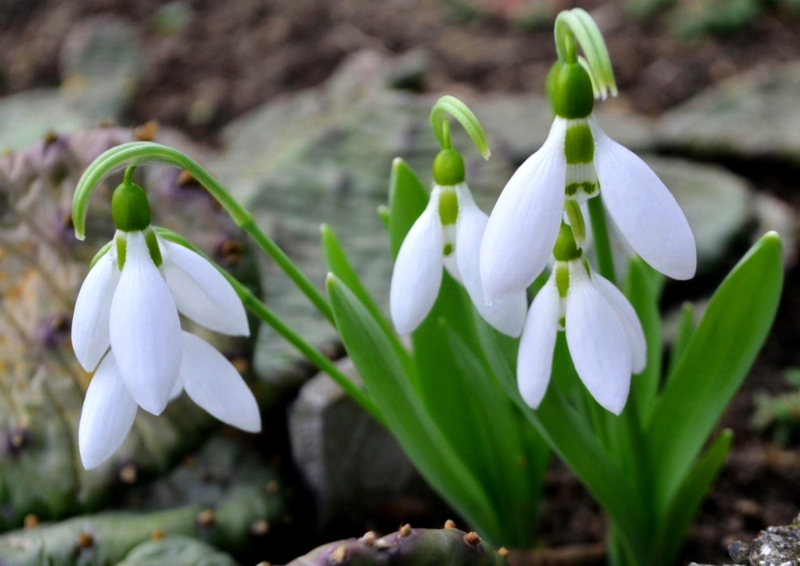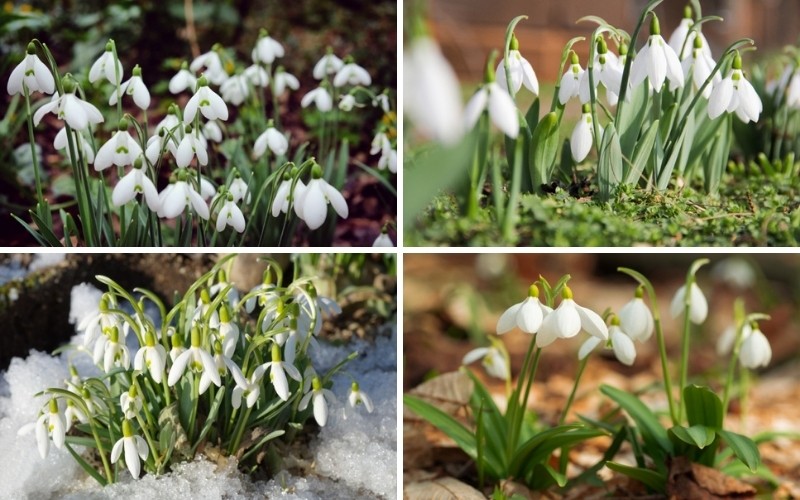
The snowdrop (Galanthus spp.) is one of the most recognizable flowers to many people because of their trademark white flowers that droop down, looking like drops of snow. They also bloom in late winter and early spring (in general; some are autumn-blooming, and more on those later) when many areas are still dealing with snow and frosts, making them an essential flower for gardens in colder regions. Snowdrops, depending on the species and cultivar, can grow in USDA plant hardiness zones 3-8. They’ll bloom early if the weather is fine.
Snowdrops have a couple of interesting mechanisms that allow them to bloom when they do. One is a stiff, sharp leaf tip that can bust through frozen ground; when these flowers are ready to go, they are not letting a little icy soil stop them. The other is that their sap contains a compound that acts like antifreeze, so the flowers can thrive in some seriously frosty conditions. You may still see the flowers collapse when it gets very cold, but they’ll recover once the cold spell is over.
The flowers have three outer petals and three inner petals. The inner petals have green markings that often serve to distinguish the species and cultivars. One cultivar, G. plicatus ‘Wendy’s Gold’, has yellow markings instead.
As mentioned, a few snowdrops bloom in autumn, usually in September or October.
1. Galanthus nivalis
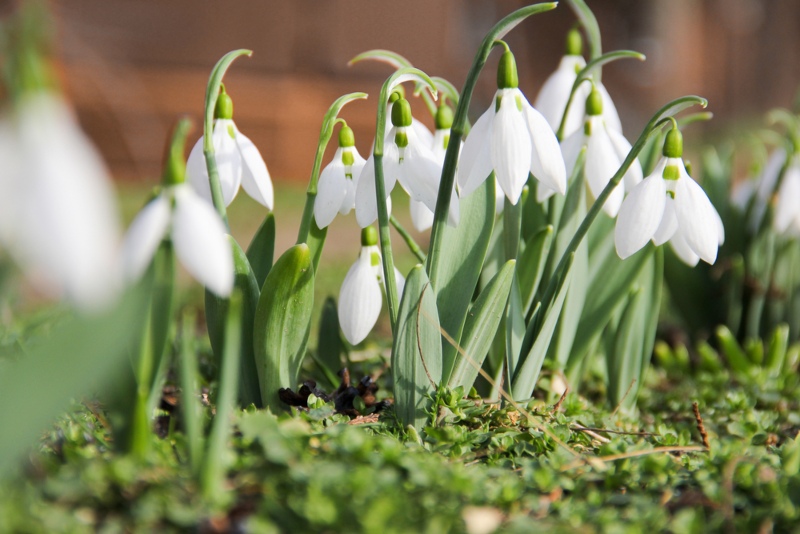
One of the big three that have produced countless cultivars, this snowdrop grows in zones 3-7 and usually blooms in February. It does better in colder zones and is a great flower for planting under deciduous trees. The bulbs can sometimes cause skin irritation, and gloves are advised when handling them.
2. Galanthus elwesii
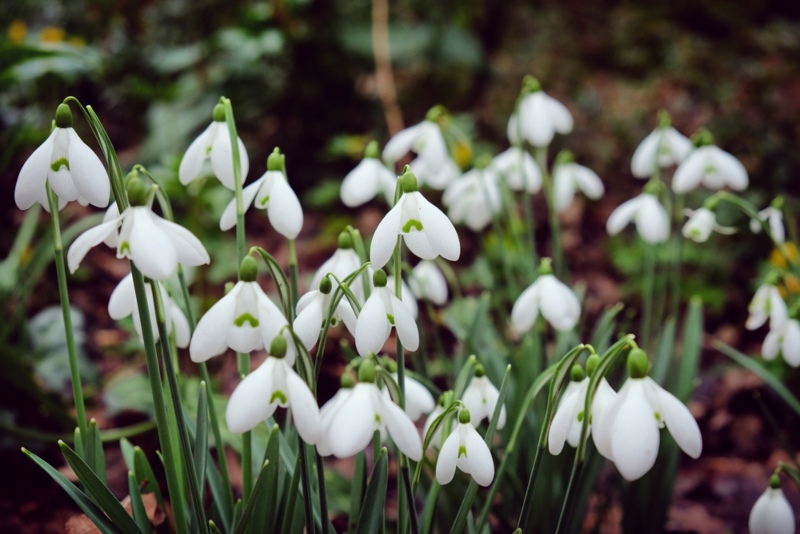
The second of the main three snowdrop species, also called the giant snowdrop. This one likes zones 4-7 and will bloom between February and March. A native of the Balkans and Turkey, this is a snowdrop that will actually self-seed. Leaves will turn yellow as they age. This species is very good for both lawns and rock gardens.
3. Galanthus plicatus
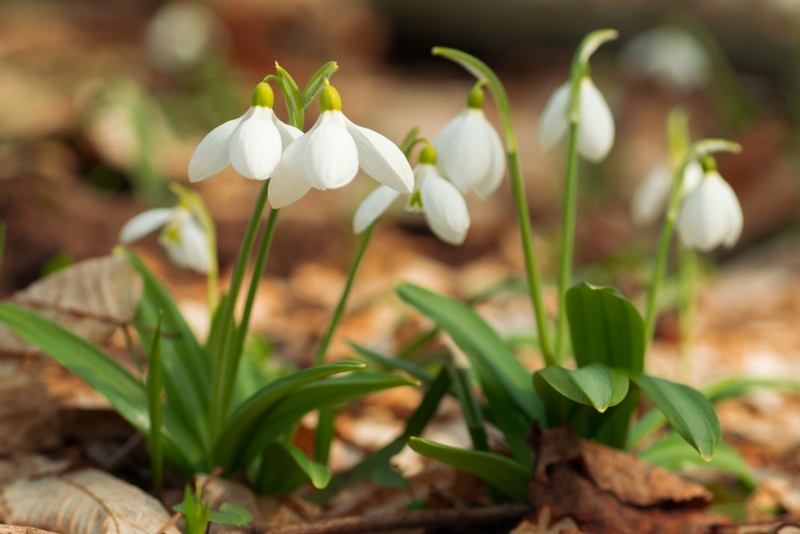
The third of the big three, often known as the pleated snowdrop because of a fold in the leaves. This is native to the Crimean peninsula and while it can handle sunlight, areas with more indirect light may be better.
4. Galanthus caucasicus/alpinus
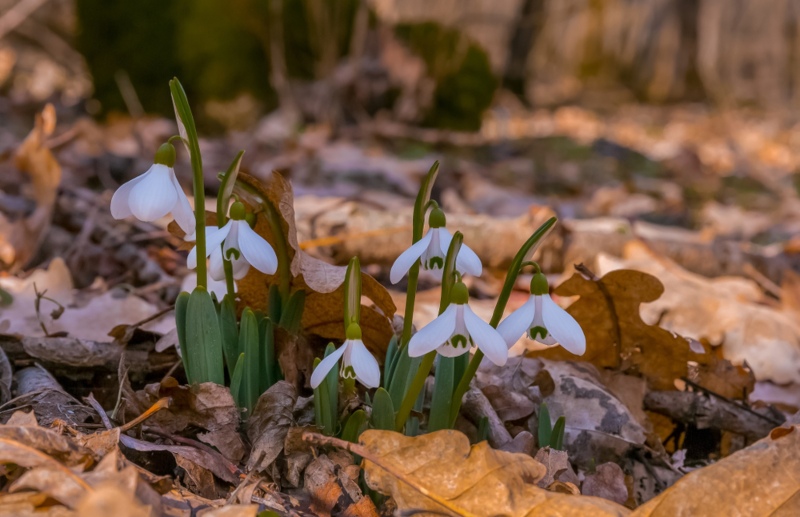
This snowdrop prefers zones 5-7 and will bloom from February to March. This is a self-cleaning snowdrop that you can leave to its own devices as it ages.
5. Galanthus bursanus
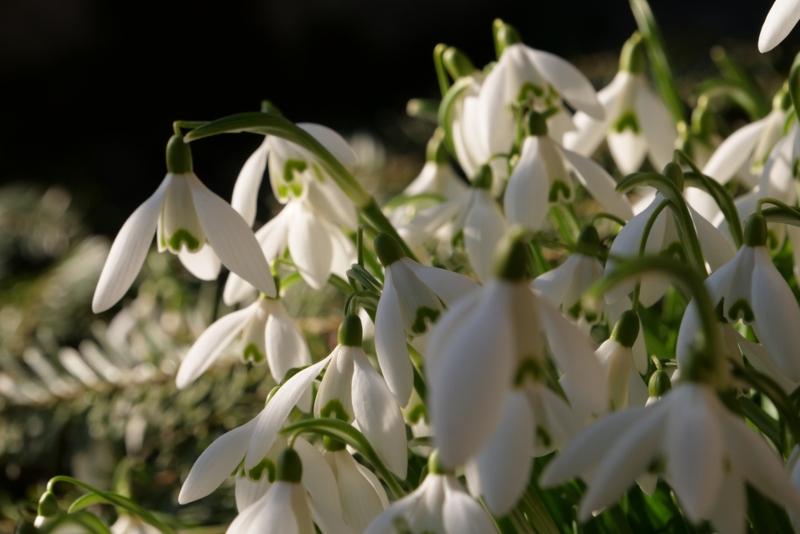
This is a relatively new variety discovered in Turkey in 2019. It’s one of the autumn-flowering snowdrops and grows in clay soils. Technically this is an endangered wild species, but keep your eyes open as it’s always possible the cultivar could eventually be divided and grown at home.
6. Galanthus ikariae
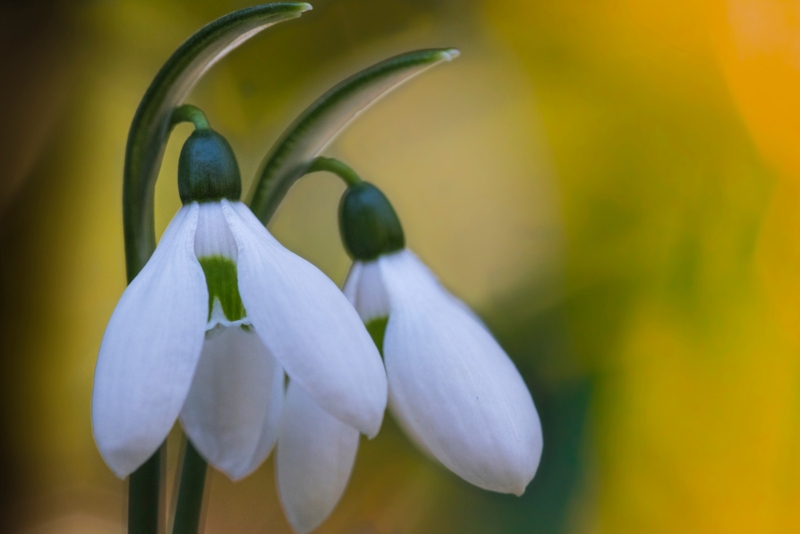
This is a Greek snowdrop that will grow in zones 3-7. It doesn’t have many pest issues itself but can carry Botrytis galanthina, so do not plant this near other plants that are susceptible to that pathogen.
7. Galanthus woronowii
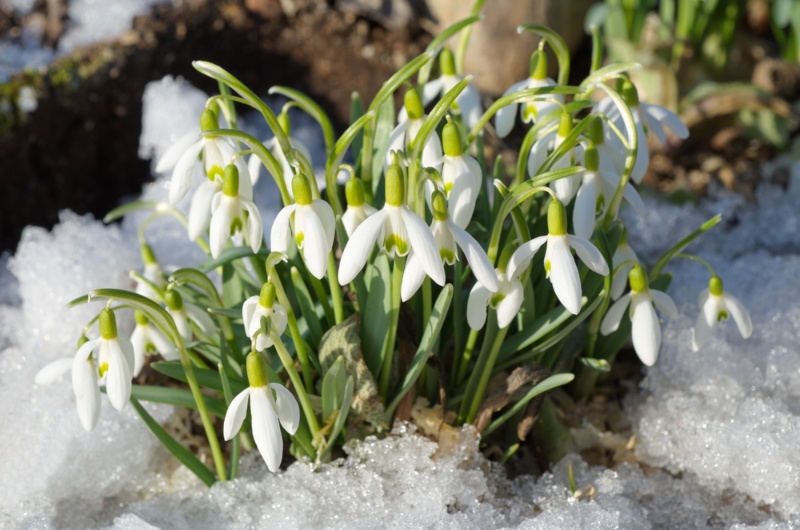
This is a tall snowdrop, with stems reaching a foot in height. It blooms in March and prefers full sun. It grows in smaller clumps, so it’s a great plant for those nooks and crannies in the garden.
8. Galanthus reginae-olgae
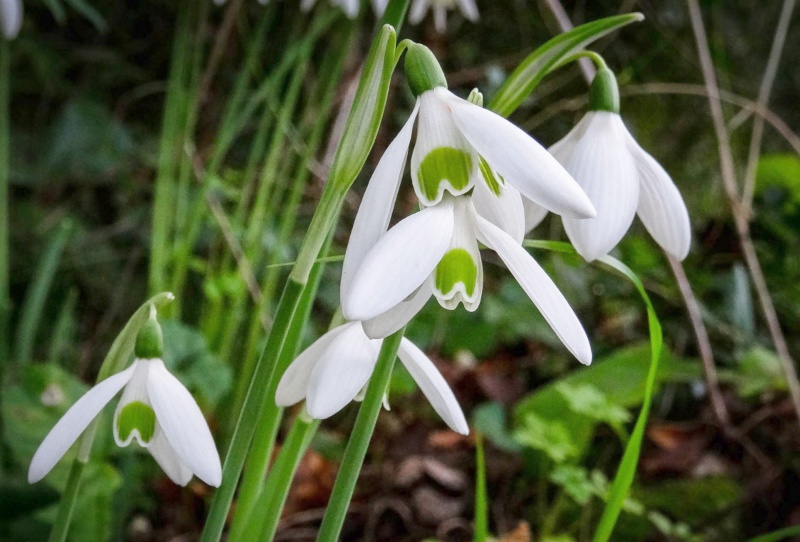
Also known as the autumn snowdrop, so as you can guess, this one blossoms in fall. It’s a very easy-growing snowdrop that doesn’t need much care. It blooms in September and October and has a strong fragrance.
Snowdrops Planting Tips
Plant snowdrop bulbs in fall for a late winter/early spring growing season. Dried-out bulbs are no good, and these dry out easily; plant them as soon as you get them if you’re buying the bulbs from a commercial source. Each bulb should be spaced at least two inches apart and planted about 3 or 4 inches deep, but don’t separate them by too much space; when these grow and bloom, you should see a veritable carpet of white and green because these flowers like to grow in masses. In fact, you’ll often see them in clumps because of how they reproduce. You don’t have to worry about self-seeding, but these do produce offsets, which are new plants growing off the main bulb. If you want to divide them, wait until after the flowers have appeared but before the leaves start to wither.
Snowdrops are essentially self-cleaning. They’ll die back to the ground in late spring, and the bulbs will remain dormant over the warmer months and the next fall and winter before growing again the next year. The ground they’re in can look rather bare if nothing else is around, so mark the areas where you’ve planted them. If you’ve planted them among grass, be very careful when mowing so that you don’t mow down any snowdrop leaves. Snowdrops love full sun in spring, but they can handle part shade, too, if the shade appears as the season goes on. Observe shadow patterns in your yard or plant some bulbs under trees that will be bare in late winter and early spring. Bulbs should be in fairly moist but well-draining soil.
Many snowdrop cultivars – there are anywhere from 1,000 to 1,500 cultivars – descend from only three main species, but you can find less common species if you look hard enough. Snowdrops in general are deer- and rabbit-resistant and don’t have any real pest problems to speak of. Mice and squirrels might occasionally have a go at them, but in general, these perennials are tough guys that don’t face a lot of enemies other than heat.





